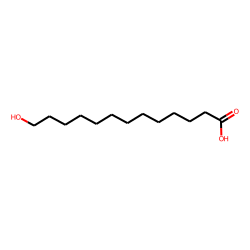

Here, we discriminate uplift episodes driven by magma intrusion at shallow depth from those driven by deep fluid influx in the aquifers, taking advantage of the exceptional, more than 35-years long, CFc geochemical record of CO 2-rich gases discharged from fumaroles located within the Solfatara crater (Forum Vulcani, Bocca Grande, and Bocca Nuova vents) and the Pisciarelli area 15, 21, 22, 23, 24 (Fig.

A vigorous hydrothermal system, fed by magmatic gases, drives the diffuse degassing of huge amounts of CO 2, fumarole activity and mud pools 14, 15, 21, 22, 23, 24. Its evolution in historical times is marked by the Monte Nuovo eruption 18, the last one, occurred in 1538 after a repose period of circa 2500 years, and by the continuous alternation of ground uplift and subsidence phases 15, 16, 19, 20. CFc is a large (~12 km in diameter), restless caldera surrounding the Neapolitan area (Southern Italy), exposed to the highest volcanic risk in the world given the intense urbanisation 15, 16, 17. Furthermore, interpretations of ground deformation and geochemical data are too model-dependent and very often contrasting, such as in the case of determining the nature, size and depth of the overpressure source causing deformation 13, 14.Īmbiguities and difficulties in understanding the role of magmatic and hydrothermal triggering processes are well illustrated by the non eruptive unrest occurring at Campi Flegrei caldera (CFc) for decades (Fig.

Variations in gas discharge are commonly perceived to represent a delayed response to magmatic changes, being mainly controlled by the hydrothermal system and rock permeability 8, 9, 10, 11, 12. Ground uplift, a typical marker of caldera unrest, may reflect magma movement and pressurization as well as pore pressure increase due to the changes in fluid phase and hydraulic flow patterns 5, 6, 7, 8, 9, 10, 11. Such uncertainties in determining the source and likely outcome of the unrest are even larger for calderas than for other volcanoes, essentially because of the stronger influence of hydrothermal systems at calderas 2, 3, 4. However, large uncertainties in the knowledge of the links between hydrothermal and magmatic processes affect the forecasting of the unrest evolution. The consequent CO 2-infiltration and progressive heating of the surrounding deforming rock volume cause the build-up of pore pressure in aquifers, and generate the striking temporal symmetry that characterizes the ongoing uplift and the post-1984 subsidence, both originated by the same but reversed deformation mechanism.Ĭaldera unrest is a complex phenomenon consisting in a departure from the background or baseline behaviour of geophysical and geochemical indicators, such as changes in ground level, seismicity, gravity and degassing (total discharge, CO 2 emissions and changes in gas chemistry) due to magma and/or hydrothermal system dynamics 1, 2, 3. This resulted in the drying of the base of the hot hydrothermal system, no more buffered along the liquid-vapour equilibrium, and excludes any shallow arrival of new magma, whose abundant steam degassing due to decompression would have restored liquid-vapour equilibrium. By using temperatures from the CO 2-CH 4 exchange of 13C and thermodynamic analysis of gas ascending in the crust, we demonstrate that after the last 1982–84 crisis the deep hydrothermal system evolved through supercritical conditions under the continuous isenthalpic inflow of hot CO 2-rich gases released from the deep (~8 km) magma reservoir of regional size. Here we use the exceptional ground displacement and geochemical datasets from the actively degassing Campi Flegrei caldera (Southern Italy) to show that ambiguities disappear when the thermal evolution of the deep hydrothermal system is accurately tracked. Interpreting volcanic unrest is a highly challenging and non-unique problem at calderas, since large hydrothermal systems may either hide or amplify the dynamics of buried magma(s).


 0 kommentar(er)
0 kommentar(er)
